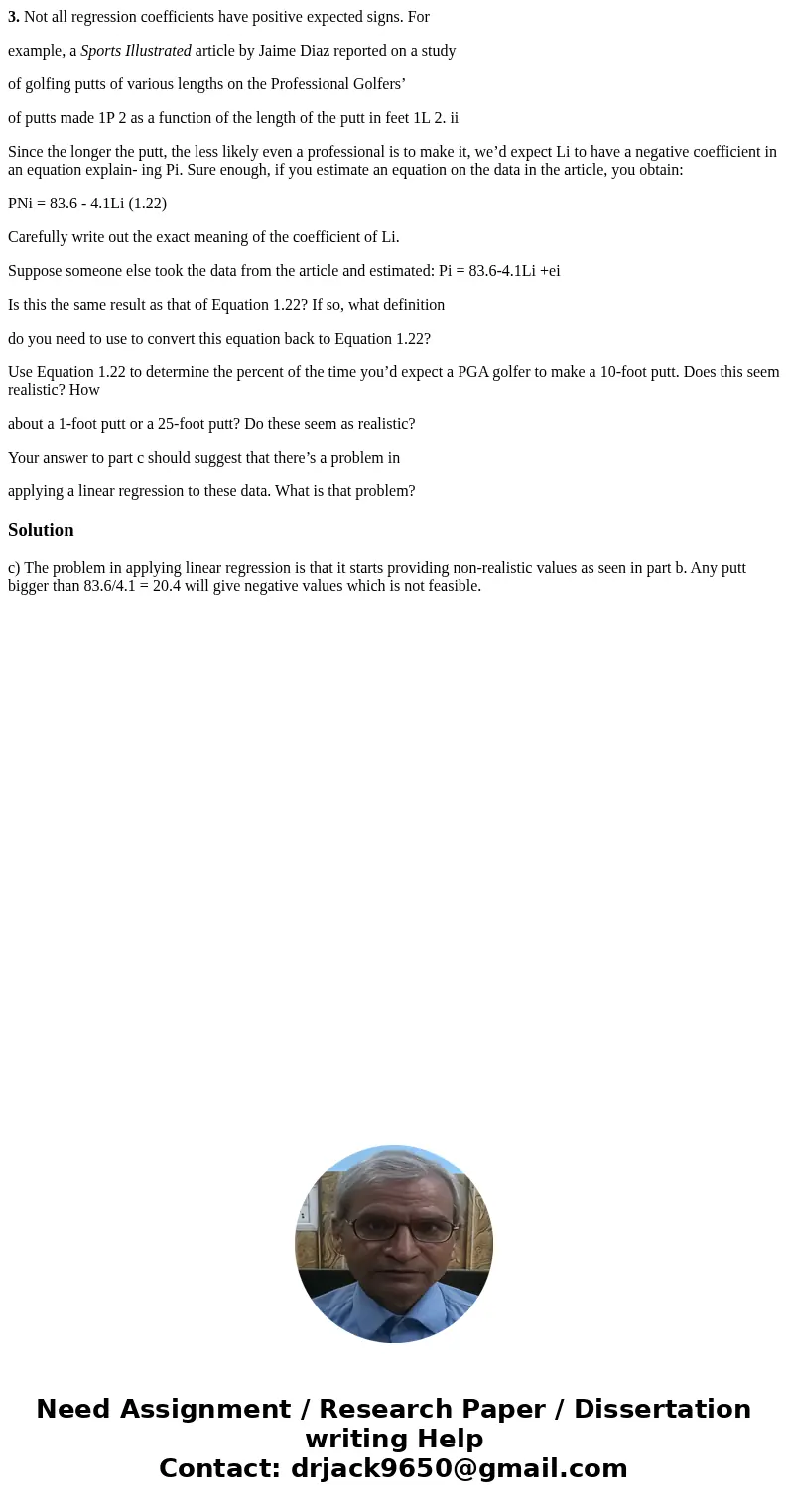3 Not all regression coefficients have positive expected sig
3. Not all regression coefficients have positive expected signs. For
example, a Sports Illustrated article by Jaime Diaz reported on a study
of golfing putts of various lengths on the Professional Golfers’
of putts made 1P 2 as a function of the length of the putt in feet 1L 2. ii
Since the longer the putt, the less likely even a professional is to make it, we’d expect Li to have a negative coefficient in an equation explain- ing Pi. Sure enough, if you estimate an equation on the data in the article, you obtain:
PNi = 83.6 - 4.1Li (1.22)
Carefully write out the exact meaning of the coefficient of Li.
Suppose someone else took the data from the article and estimated: Pi = 83.6-4.1Li +ei
Is this the same result as that of Equation 1.22? If so, what definition
do you need to use to convert this equation back to Equation 1.22?
Use Equation 1.22 to determine the percent of the time you’d expect a PGA golfer to make a 10-foot putt. Does this seem realistic? How
about a 1-foot putt or a 25-foot putt? Do these seem as realistic?
Your answer to part c should suggest that there’s a problem in
applying a linear regression to these data. What is that problem?
Solution
c) The problem in applying linear regression is that it starts providing non-realistic values as seen in part b. Any putt bigger than 83.6/4.1 = 20.4 will give negative values which is not feasible.

 Homework Sourse
Homework Sourse